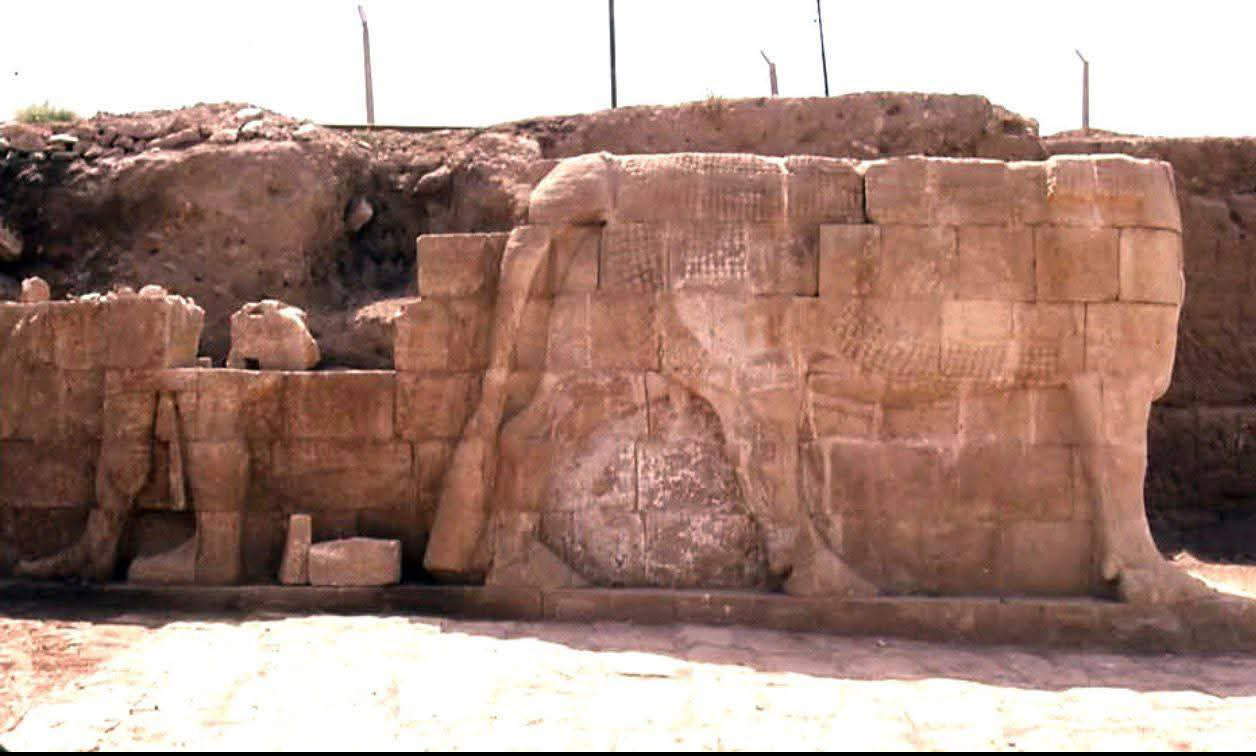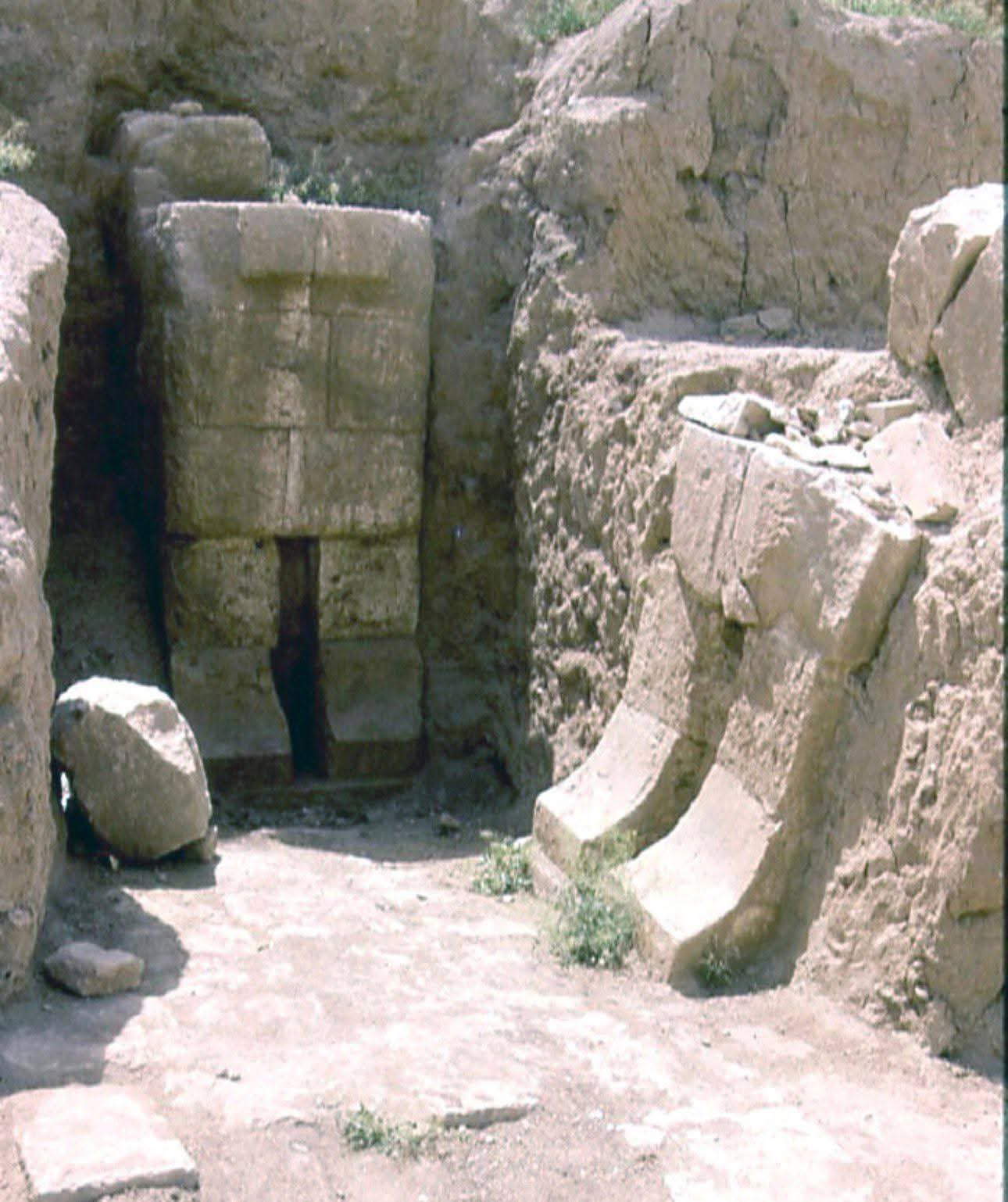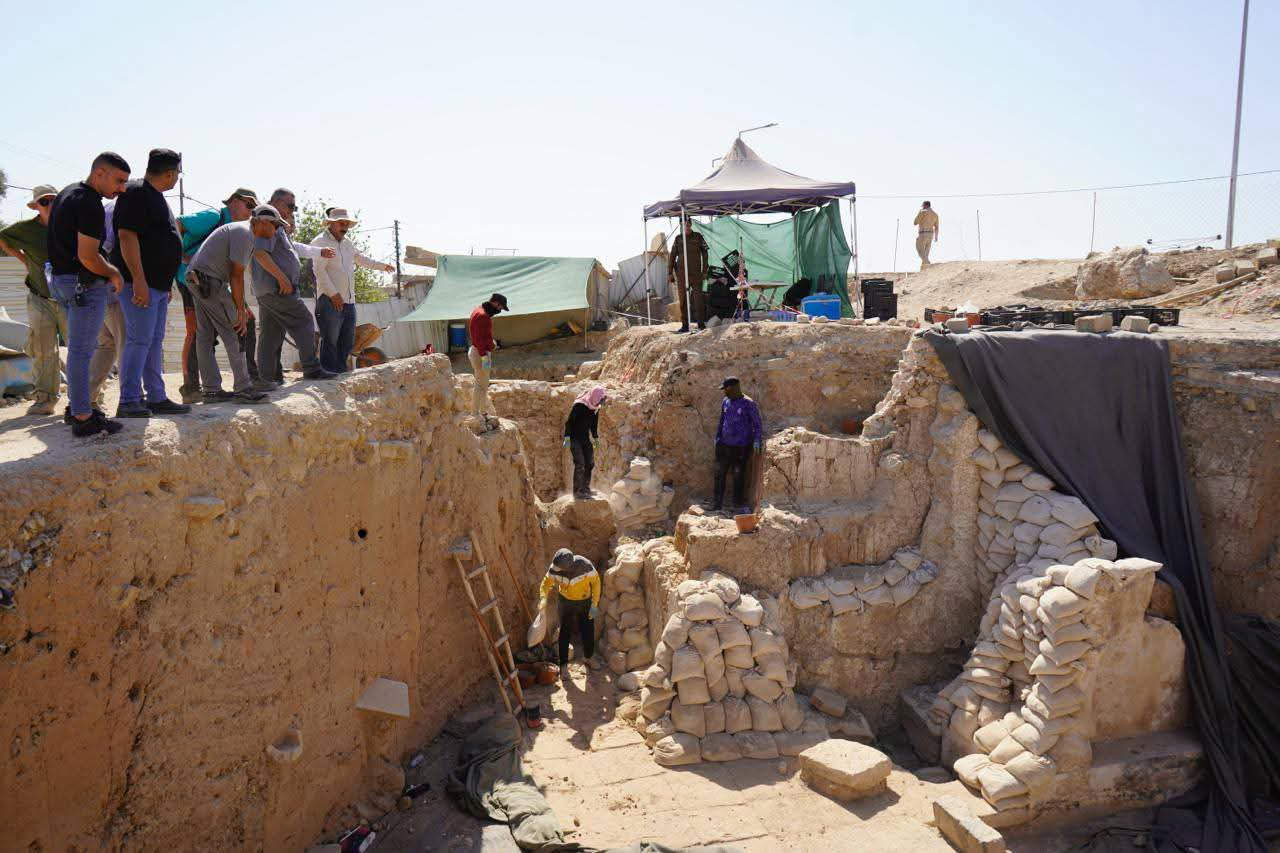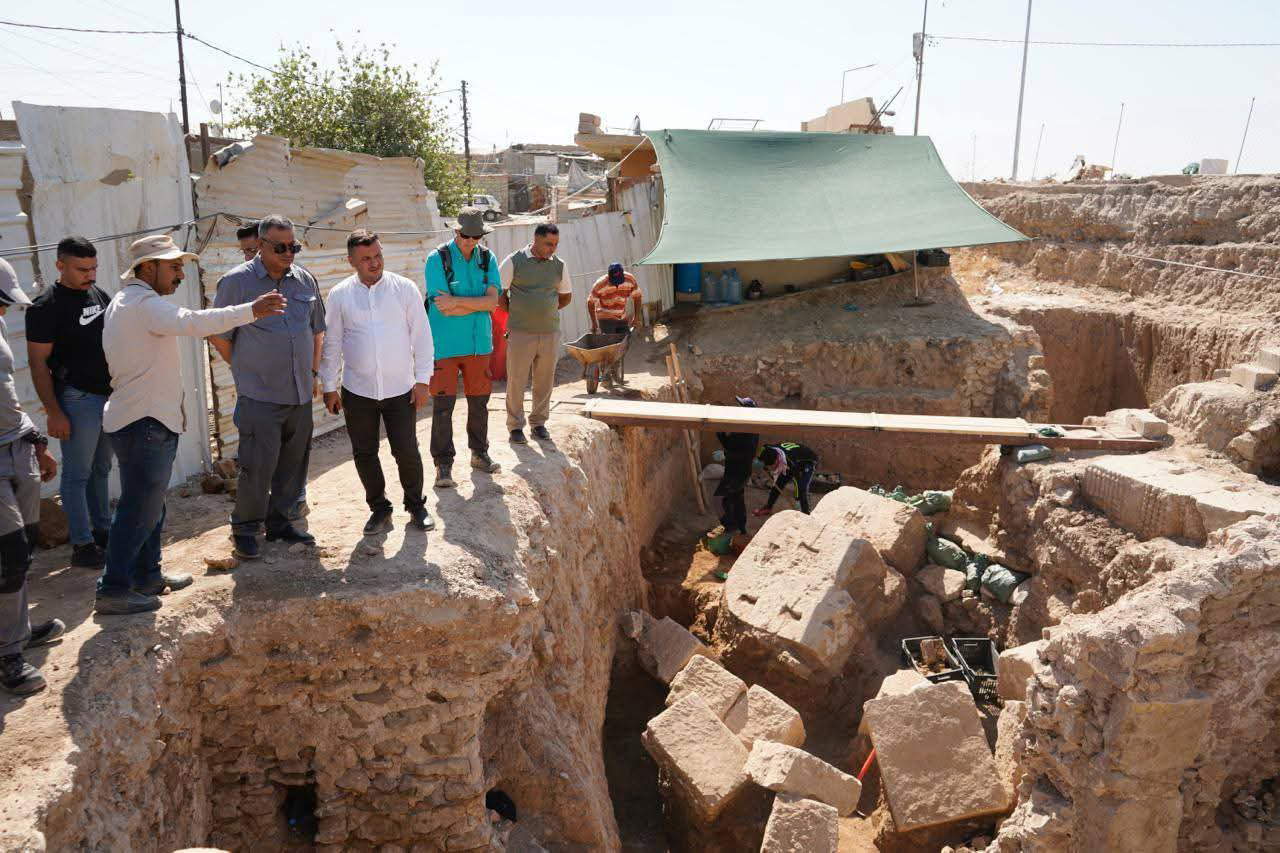Important archaeological discoveries have emerged at the site of Tell Nabi Yunus in Nineveh, Iraq, where the German mission of the University of Heidelberg is conducting the new 2025 excavation campaign(we reported on it here). The findings, presented during an official visit by the chairman of theGeneral Authority for Antiquities and Heritage of Iraq, Ali Ubayd Shalgham, reveal new architectural and sculptural elements related to the Assyrian military palace built during the reigns of Sennacherib (in office between 704 and 681 BCE. B.C.), Esarhaddon (reigned between 680 and 669 B.C.) and Ashurbanipal (reigned from 669 to 626 B.C.), three of the most important rulers of theAssyrian empire. During the inspection, Shalgham was able to take a close look at recent discoveries made at the site, particularly in the sector of the military palace that stood in Nineveh, considered one of the most important political and cultural centers of the ancient Near East.
Among the most important discoveries is the facade of the throne room, decorated with bas-relief reliefs that testify to the high technical and artistic level achieved by Assyrian craftsmen. Added to these are numerous specimens oflamassu, winged bulls with human faces placed to protect the monumental gates of the royal palaces. Archaeologists have identified theremains of fifteenlamassu, twelve of which are still in situ. Some of them appear to have been carved from a single block of stone, while others were made by assembling multiple stone elements, a rare construction solution in Assyrian architecture of the late phase.


The presence of such a large number of lamassu in the same complex and their technical variety thus provide new elements for understanding the construction and symbolic modes of Assyrian royal palaces. The monumental stone guardians, depicted with the body of a bull, eagle wings and a human face, played as much a functional as a ritual role, marking the main entry points and warding off evil forces from the political center of the empire.
The chairman of the General Authority for Antiquities and Heritage emphasized that these achievements represent an important addition to the historical and artistic heritage of the whole of Iraq. He also highlighted the value of international collaborations in the field of archaeological research, praising the work of the German mission and Iraqi workers engaged in excavation, documentation and restoration. Indeed, the accuracy of the conservation and cataloguing operations will be crucial to the protection and enhancement of the site, whose historical and symbolic importance remains central to understanding the roots of ancient Mesopotamia. The discoveries made at Tell Nabi Yunus therefore confirm the importance of the site within the Assyrian archaeological landscape. Located in a strategic area of the city of Nineveh, the complex was an integral part of the Assyrian political and military system. The decorative richness, the monumentality of the structures and the quality of the sculptures found demonstrate the Assyrian rulers’ desire to represent their power through an imposing and highly symbolic visual language.


 |
| Discoveries continue in Nineveh (Iraq): new reliefs and fifteen lamassu in the palace of Assyrian kings |
Warning: the translation into English of the original Italian article was created using automatic tools. We undertake to review all articles, but we do not guarantee the total absence of inaccuracies in the translation due to the program. You can find the original by clicking on the ITA button. If you find any mistake,please contact us.